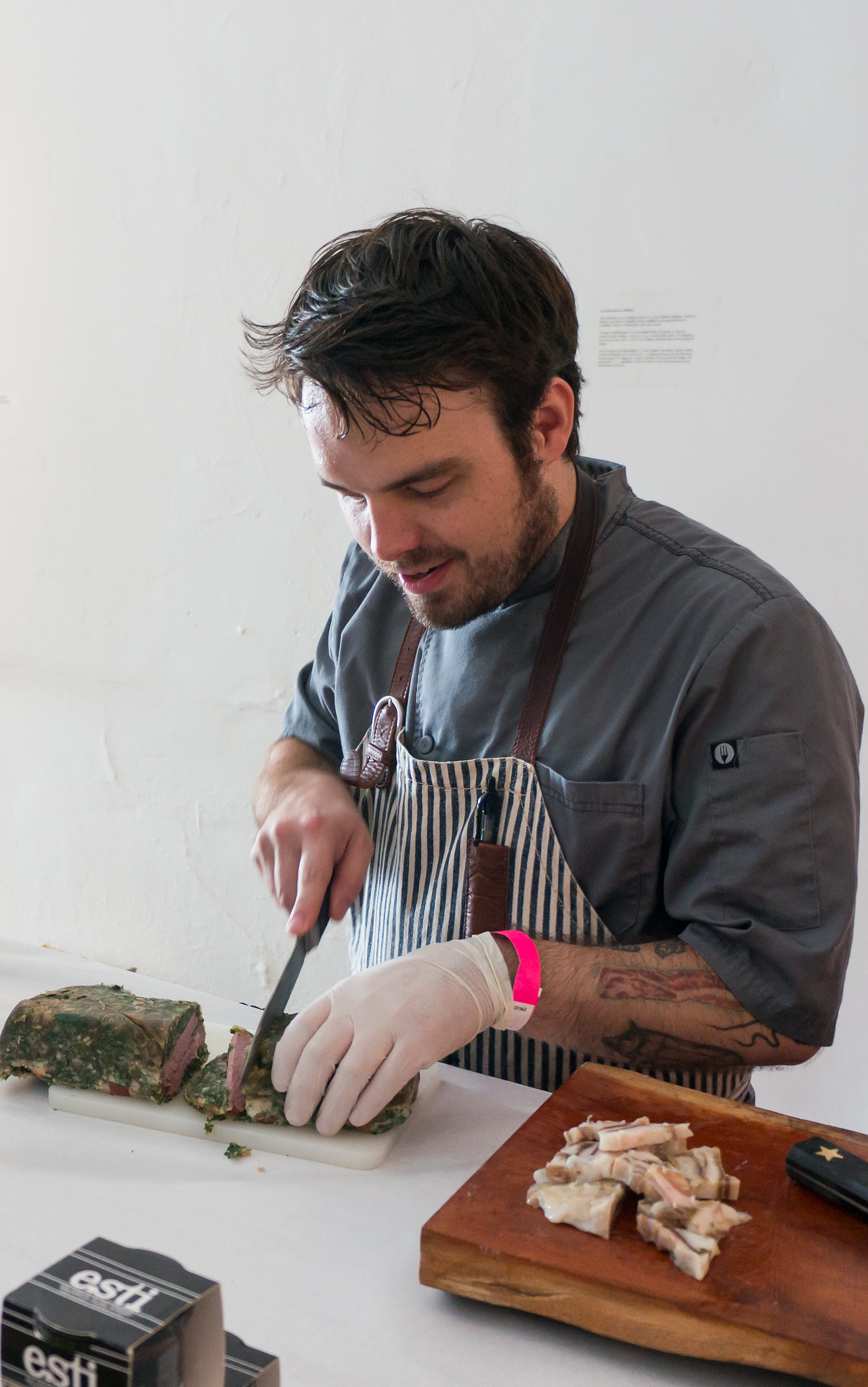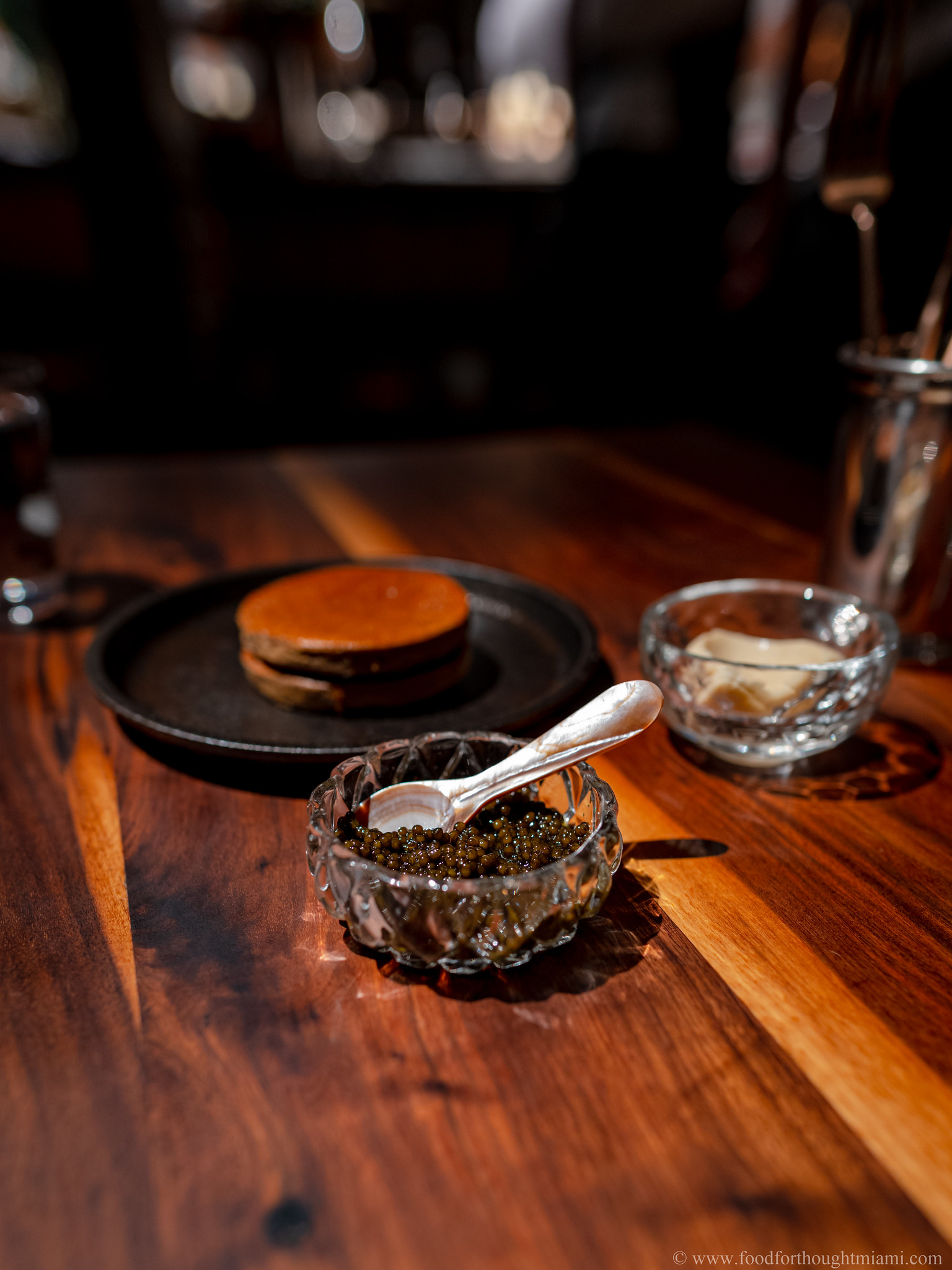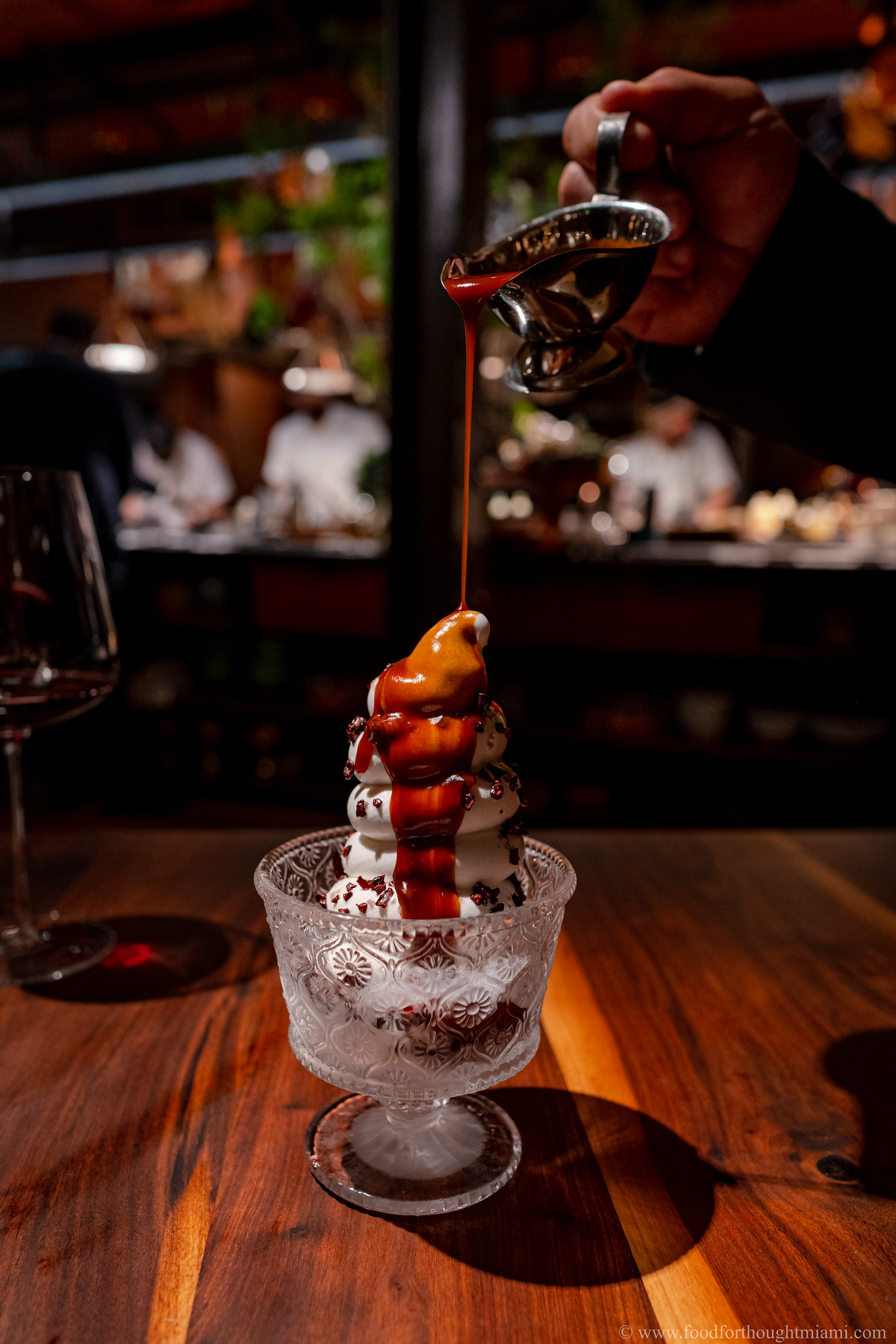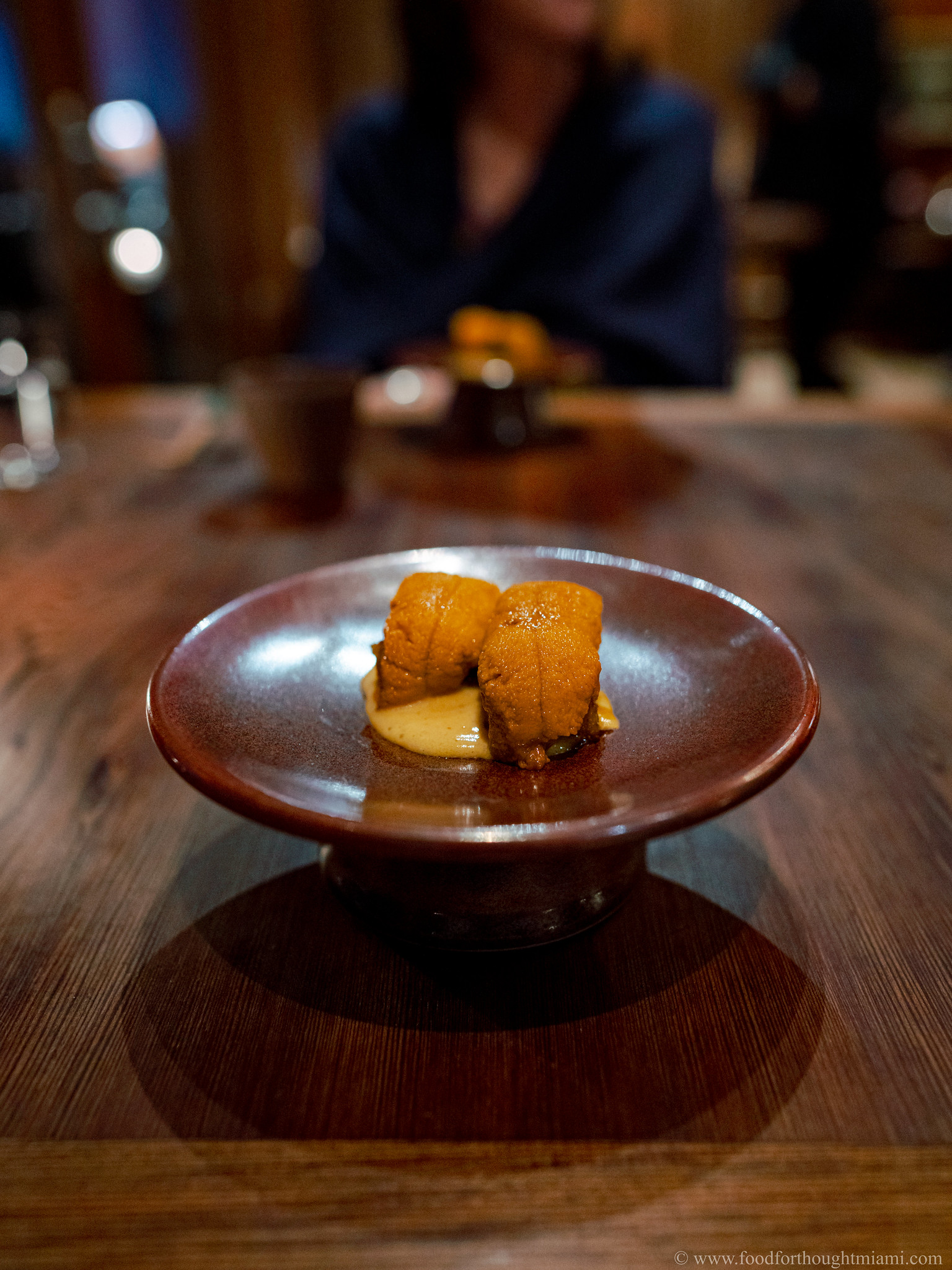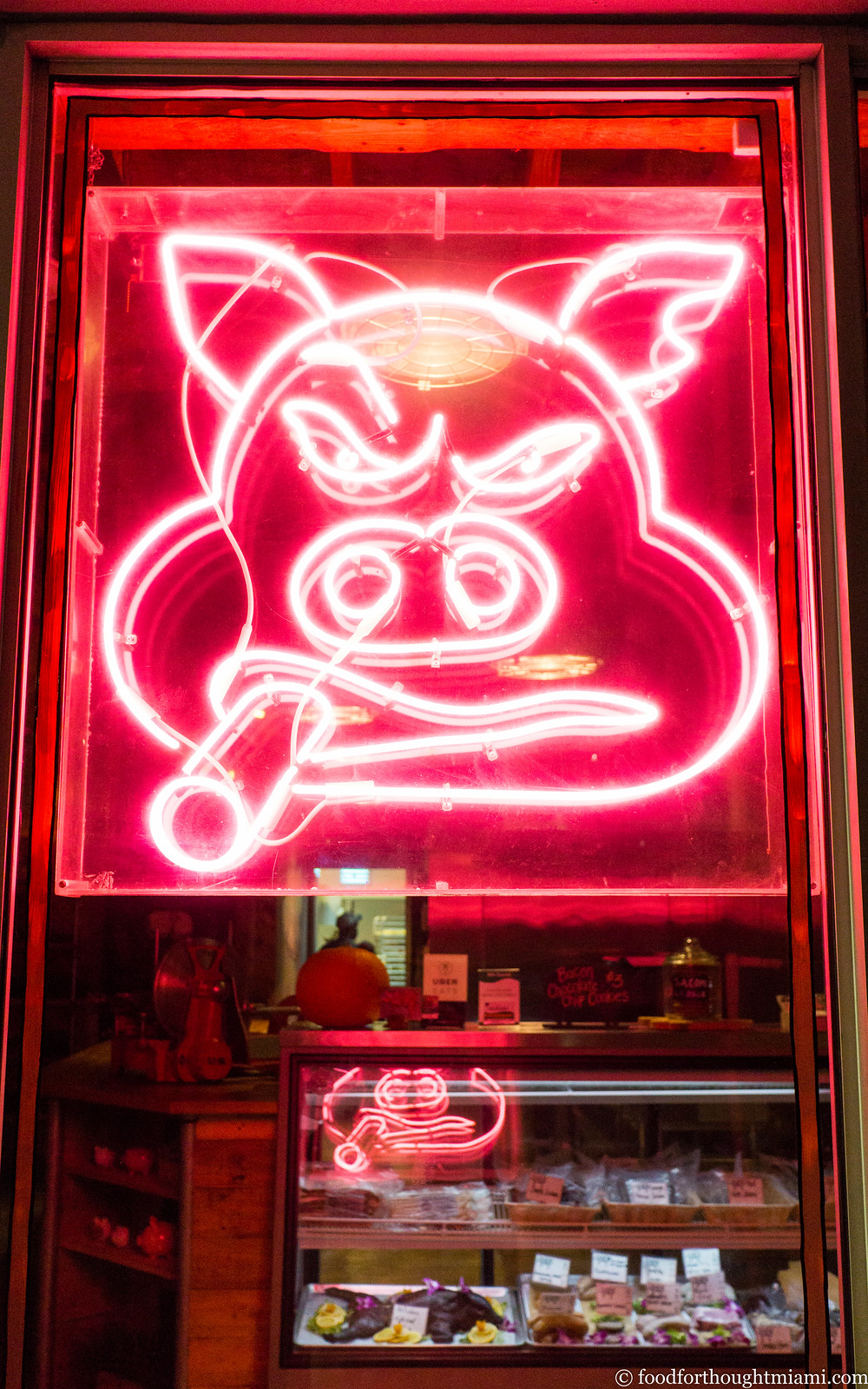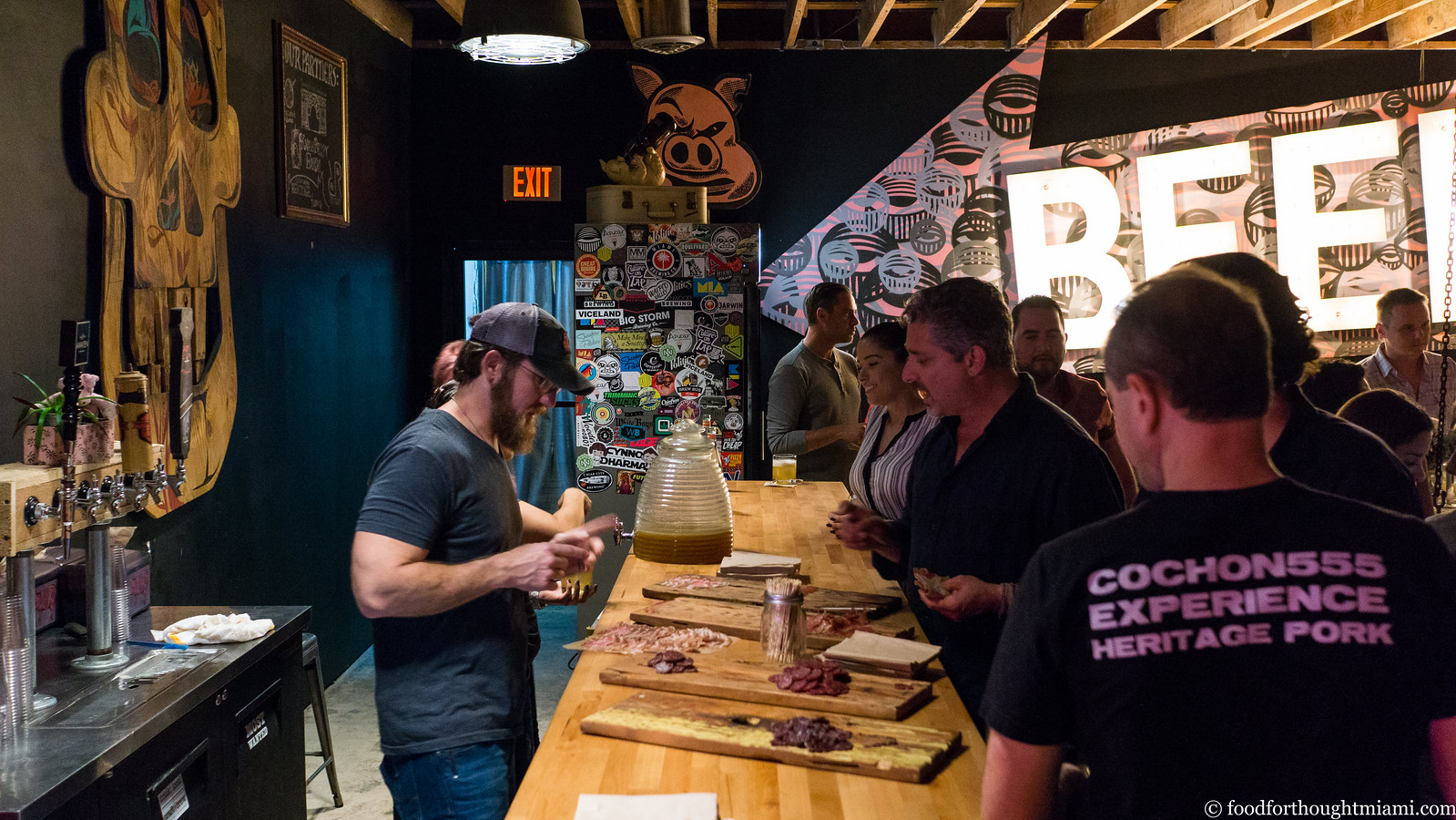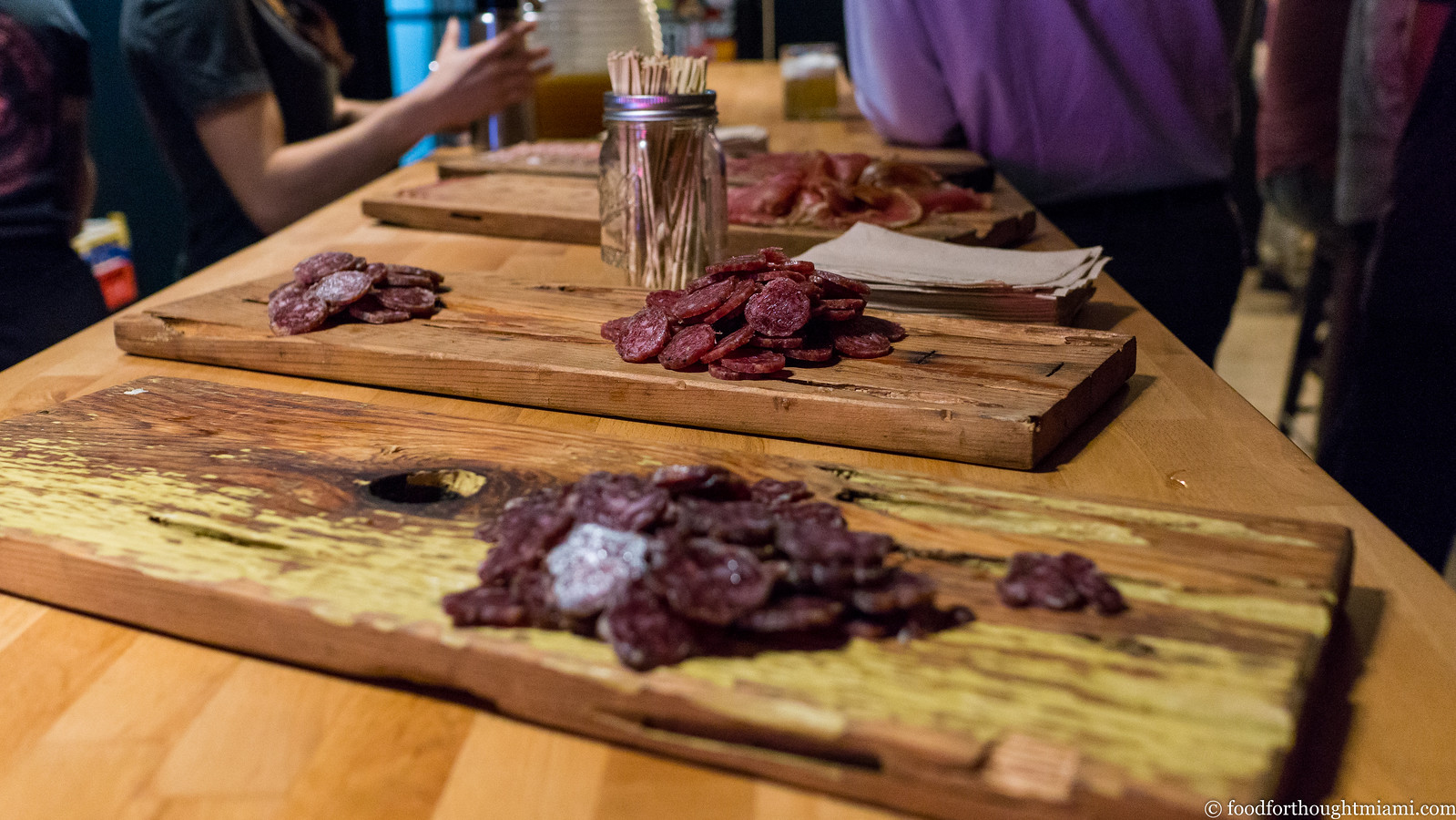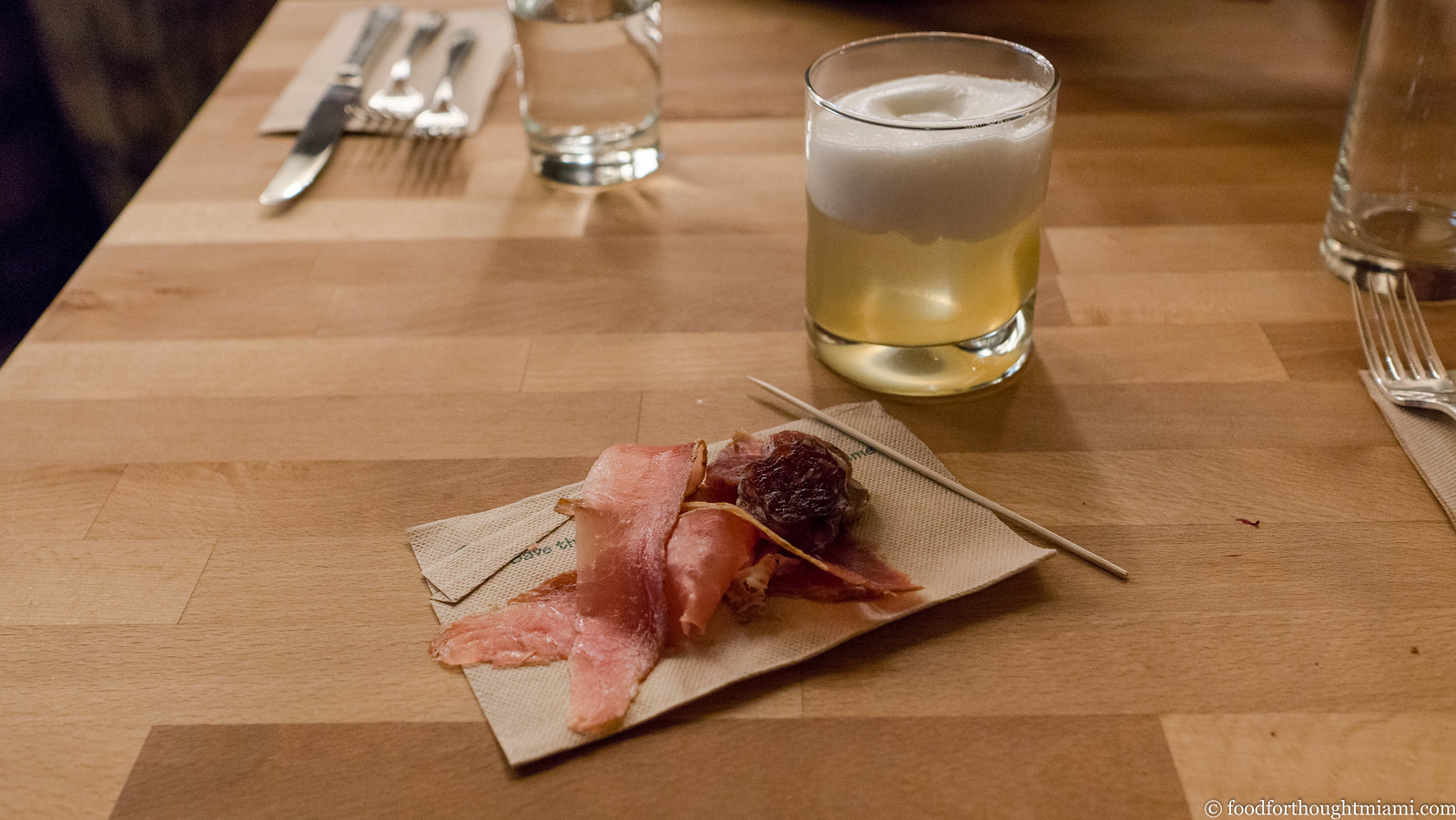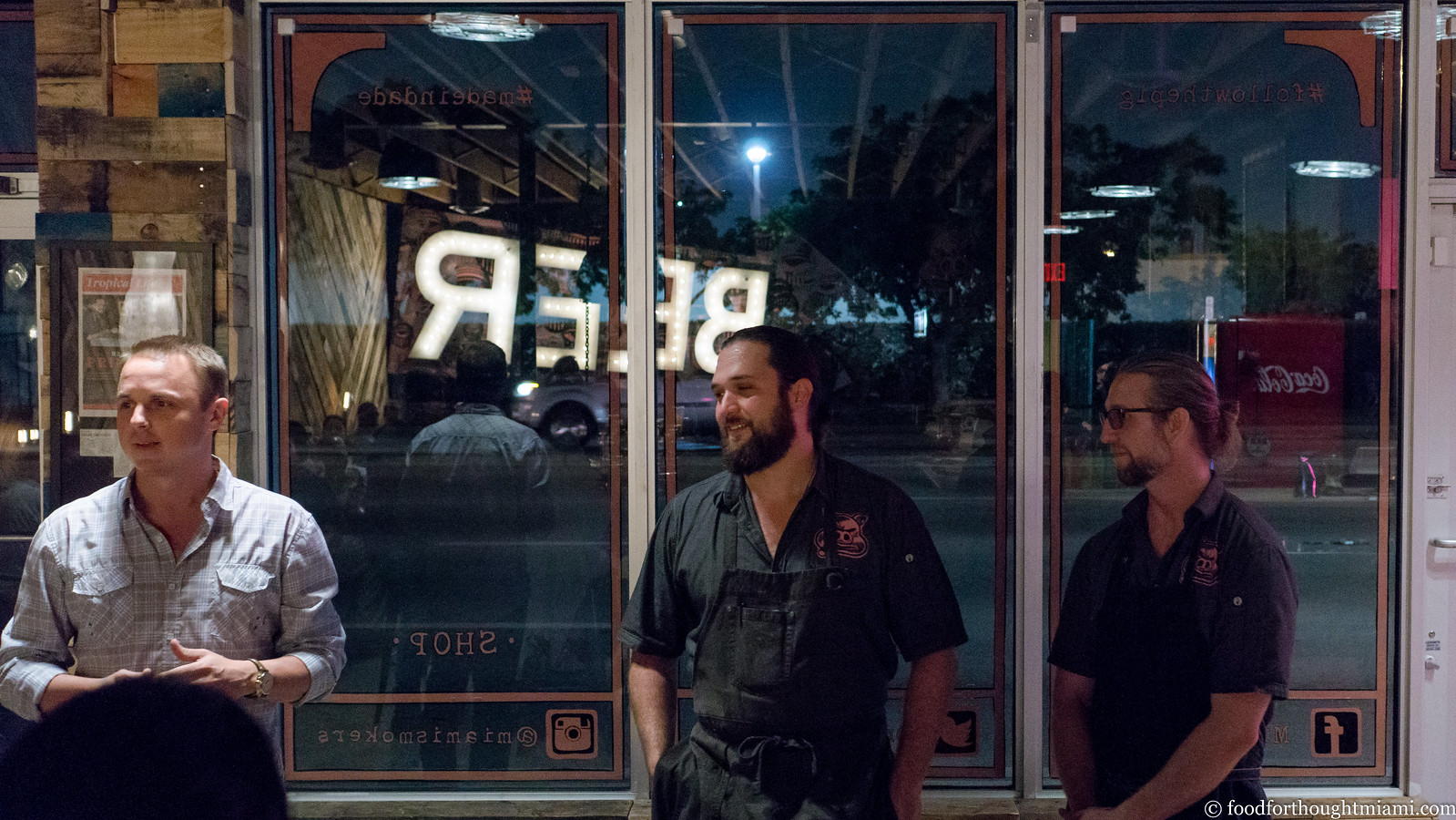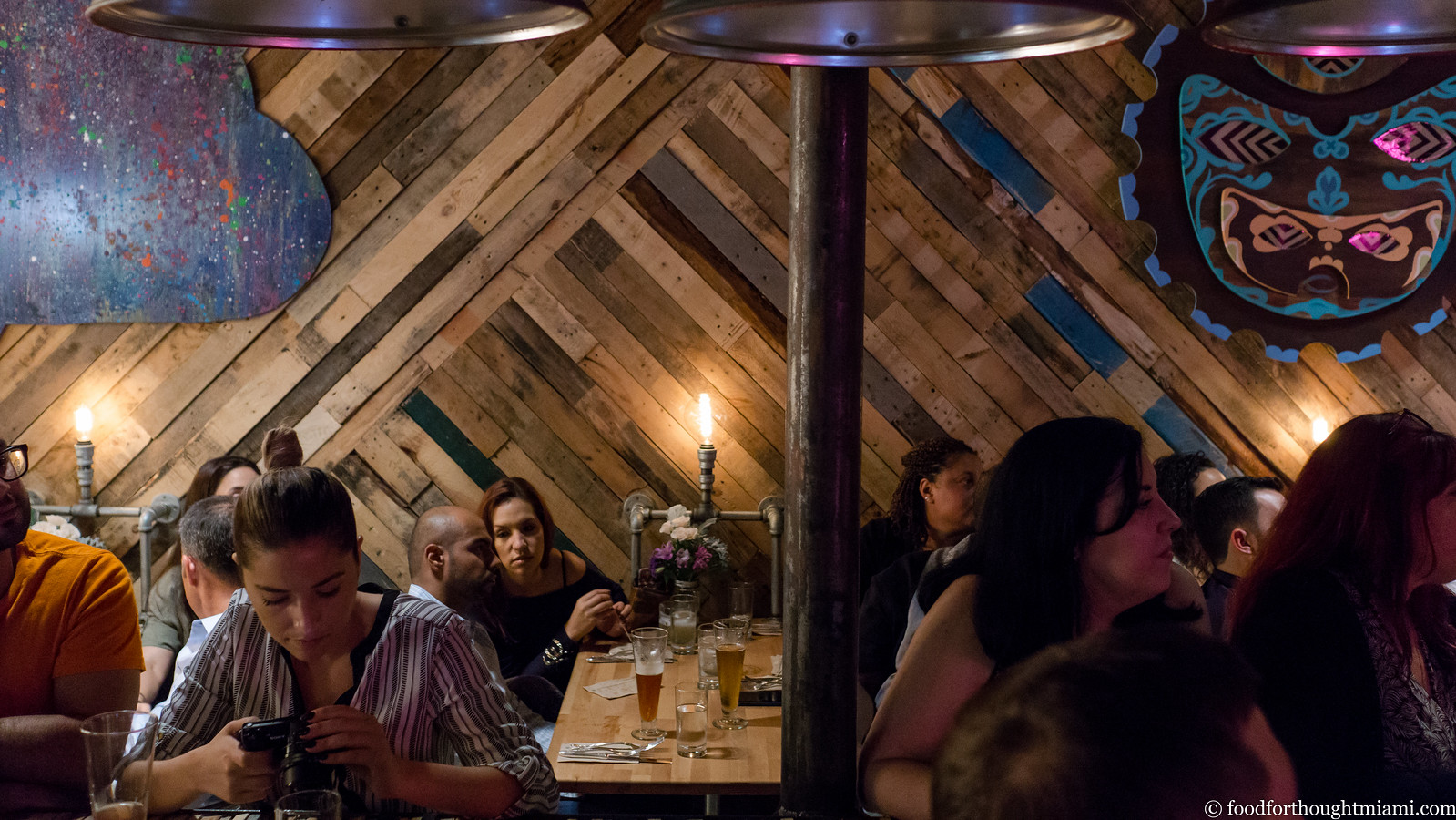Life is not all Michelin three star dining experiences. Sometimes, all you want is a good cheap meal - a burger, a sandwich, something that satisfies your hunger without draining the wallet. Over the past few weeks I've been to a few such places and thought I'd try to add it all up.
Five Guys Famous Burgers & Fries
Somehow I missed out on all the brouhaha over
Five Guys. Indeed I was actually more familiar with
In-N-Out, a similarly regarded but exclusively West Coast chain, than I was with Five Guys, which originated in the Washington DC area. But good reports started coming to my attention here and there, so when an opportunity presented itself I popped in to the Midtown Miami Five Guys location and tried it. Like In-N-Out, the menu is minimalist in approach though with a slim few more options (but no "
secret menu" to my knowledge) - burgers, with cheese and/or bacon (or without); hot dogs (ditto); and fries, "Five Guys style" or Cajun. Burgers are available with a fairly traditional lineup of condiments, along with a couple not-terribly eccentric outlyers like bbq sauce, jalapeños or green peppers. Free peanuts in the shell while you wait in line is a nice touch.
Maybe I'm a fussy little nancy-boy, but I am usually underwhelmed by any burger for which you cannot specifiy your preferred degree of doneness, since I'm not a fan of well-done. But Five Guys makes up for this in a couple of ways: first, they stack two thinner well-done burgers together, giving the illusion of a nice fat burger; and second, what the burger lacks in lightly cooked juiciness, it makes up for in well-cooked greasiness. Not that that's a bad thing, necessarily. I had a cheeseburger with their routine "with everything" toppings (ex- mustard), which brought a nice combination of ketchup, mayo, fresh crisp iceberg lettuce, a slice of tomato that actually tasted like one, grilled onions and mushrooms. The onions and mushrooms were a nice (free) addition that also helped make the burger seem juicier. The patties were nicely scraggly and imperfect, reflecting a burger that has not been overhandled. The bun was toasted on the griddle next to the burgers, which were cooked and assembled to order. This was a darn good burger, especially for $5.
The fries, about $2, not so much. Though it's clear they're using fresh potatoes (indeed they've got the bags piled up right in front of the counter to show you) and provide an over-generous serving, "Five Guys style" apparently means undercooked and undersalted. And unfortunately there are no other options in the way of sides other than said fries. Maybe the Cajun spice works some wonders on these. But it'd be nice to have something to match the satisfaction level of the burger, which was quite high indeed for $5.
Five Guys Famous Burgers and Fries
3401 N. Miami Avenue, Suite 214
Miami, FL 33127
305.571.8345
 8 Oz. Burger Bar
[sorry, this restaurant has closed]
8 Oz. Burger Bar
[sorry, this restaurant has closed]
In contrast to Five Guys, which takes the mass-production burger chain model and elevates it with some attention to quality,
8 Oz. Burger Bar comes from the opposite direction. 8 Oz. is the brainchild of Chef Govind Armstrong, until recently better known for
Table 8, a fine dining restaurant in Los Angeles, and its progeny in South Beach. Like many chefs looking for ways to ride out this economic cycle, in May of last year he closed Table 8 L.A. and reopened it as a burger joint, 8 Oz. Burger Bar. When Table 8 L.A. closed, it was reported that it would be reopening in another location in a few months; I don't think that ever happened, though Armstrong did recently open another Table 8 in New York. In February, Chef Armstrong opened an 8 Oz. in South Beach, on Alton Road. Now another one has gone into the Z Hotel where Table 8 South Beach (just closed this week) is located.
While 8 Oz. tries to come across as somewhat proletariat, this is a burger joint for fussy nancy-boys (like myself), with burgers made from a special in-house grind of sirloin, tri-tip, short rib and chuck which is "cured in a Himalayan salt locker." Or, if that's not fussy enough for you, there's also an Estancia grass-fed beef burger, or lamb or turkey burgers too. The menu has a list of about 5 or so pre-composed burger assemblages, or you can craft your own from a selection of cheeses, sauces and other toppings. And yes, you can specify your preferred degree of doneness.
I chose a "Melrose" burger, a daintier 6 oz. portion of their "house blend" topped with arugula, garlic roasted tomatoes and red onion marmalade, medium-rare, to which I couldn't resist adding some Humboldt Fog, one of my favorite cheeses. (Note, by the way, that the menu I was given was much more limited than the one that is available
online. While it offered most of the cheeses, it probably had less than half of the other sauces and toppings listed on the online menu. I also couldn't find any of the snacks or other items listed online other than the sides. And prices "on the ground" are generally a tad higher as well).
This burger was so immaculately formed that it almost appeared to be one of those mysterious Boca Burgers with the grill-marks airbrushed on. I don't know if I have ever seen a patty so perfectly round. Unfortunately, my "medium-rare" request was apparently for naught, as I could barely discern any hint of pink. And the meat, as
several people have previously noted, was undersalted and consequently somewhat short on flavor, even though the "house blend" tried valiantly to overcome the stingy seasoning. That Himalayan salt locker just isn't cutting it - need to add more salt.
The "Melrose" toppings were quite nice if just a tad on the sweet side. And while Humboldt Fog on a burger may sound like a great idea (at least it did to me), the actual execution is not quite as exciting. A little wedge barely covered 1/3 of the burger, and the cheese, soft and mushy but not quite melted, didn't hit the right notes texturally (though for this pairing I recognize that I only have myself to blame).
The onion rings had a slightly sweet, not quite crisp batter which I didn't love at first, but found I couldn't stop eating these anyway. The beer selection is a real high point. Not many options on tap (indeed just Shock Top wheat ale, courtesy of
Anheuser-Busch), but a plethora of bottled micro-brews made up for it. My
Rogue Dry-Hopped Red Ale was a nice medium-weight beer with some hoppy bitterness that would have happily cut through even a much greasier burger.
The place has a nice casual vibe, with sports on the TVs and loud rock-n-roll on the stereo. I'm not sure if the guy next to me at the bar singing along to "Sweet Child of Mine" was getting warmed up for it, but I swiftly and happily made my exit just as Monday Karoake Night was getting started. At $8.50 for the burger, an extra $2 for the Humboldt Fog, $4 for the rings and another $8.50 for the Rogue Ale ($23 total), this turned out to be not quite the cheap meal I expected. Maybe I should have donned a trucker cap and drank PBR instead. But even the abbreviated menu still offered more interesting and varied toppings than you'll find at most conventional burger joints. Now if they could just loosen the grip on the salt shaker and let that "house blend" really shine.
8 Oz. Burger Bar
1080 Alton Road
Miami Beach, FL 33139
305.397.8246
 The Spot
[sorry, this restaurant has closed]
The Spot
[sorry, this restaurant has closed]
Possibly my favorite of the three places in this list is "The Spot," a newly opened sandwich place in a location along Alton Road which I think previously housed a Colombian place, Primarepa. This is another short and sweet menu with basically a choice of fried shrimp and fish and a few other items, available either on a platter with some sides or as a po'boy. I went with a fried jerk-spiced shrimp po'boy and was not at all disappointed. A slightly crusty long roll was opened up like a book and stuffed with several plump medium-sized shrimp, crispy outside but still distinctly recognizable as shrimp, not battered and coated into oblivion. This was not real Jamaican jerk spice by any means, just sort of mildly spicy, but still nicely flavorful. The shrimp were topped off with fresh shredded lettuce, decent tomato, and the clincher for me, a creamy spicy remoulade sauce, and a goodly dose of it too. The sandwich is generously stuffed and the server advised me of his preferred technique of using a fork to push back in the contents while gently squeezing the bread together a bit to get it ready for noshing. I can't help but say it - this po'boy just really hit the spot for me.
There was a short list of sides available, including a couple typical soul food items. I went with the Cajun fries, which were nice and crisp but the spice mix was overwhelmed by paprika. They actually reminded me in that respect of one of the trio of duck fat fries that come as a gratis appetizer at
Bourbon Steak. Po'boy, fries and a bottle of water set me back somewhere around $11 total. One other thing The Spot has going for it is late hours - apparently open till 2am and possibly even later on weekends.
The Spot
1570B Alton Road
Miami Beach, FL 33139
305.532.9122




